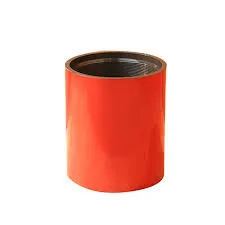- Afrikaans
- Albanian
- Amharic
- Arabic
- Armenian
- Azerbaijani
- Basque
- Belarusian
- Bengali
- Bosnian
- Bulgarian
- Catalan
- Cebuano
- Corsican
- Croatian
- Czech
- Danish
- Dutch
- English
- Esperanto
- Estonian
- Finnish
- French
- Frisian
- Galician
- Georgian
- German
- Greek
- Gujarati
- Haitian Creole
- hausa
- hawaiian
- Hebrew
- Hindi
- Miao
- Hungarian
- Icelandic
- igbo
- Indonesian
- irish
- Italian
- Japanese
- Javanese
- Kannada
- kazakh
- Khmer
- Rwandese
- Korean
- Kurdish
- Kyrgyz
- Lao
- Latin
- Latvian
- Lithuanian
- Luxembourgish
- Macedonian
- Malgashi
- Malay
- Malayalam
- Maltese
- Maori
- Marathi
- Mongolian
- Myanmar
- Nepali
- Norwegian
- Norwegian
- Occitan
- Pashto
- Persian
- Polish
- Portuguese
- Punjabi
- Romanian
- Russian
- Samoan
- Scottish Gaelic
- Serbian
- Sesotho
- Shona
- Sindhi
- Sinhala
- Slovak
- Slovenian
- Somali
- Spanish
- Sundanese
- Swahili
- Swedish
- Tagalog
- Tajik
- Tamil
- Tatar
- Telugu
- Thai
- Turkish
- Turkmen
- Ukrainian
- Urdu
- Uighur
- Uzbek
- Vietnamese
- Welsh
- Bantu
- Yiddish
- Yoruba
- Zulu
api tubing couplings
Understanding API Tubing Couplings Essential Components of Oil and Gas Operations
API tubing couplings play a crucial role in the extraction and transportation of oil and gas. As integral components of the wellbore assembly, they connect sections of tubing, ensuring a secure path for hydrocarbon flow from underground reservoirs to the surface. This article delves into the specifications, types, advantages, and importance of API tubing couplings in the oil and gas industry.
What are API Tubing Couplings?
API (American Petroleum Institute) tubing couplings are mechanical fittings used to connect lengths of steel tubing in oil and gas well drilling. These couplings serve as a bridge between tubular sections, facilitating the assembly and disassembly process of the wellbore. Typically manufactured from steel, they are designed to withstand extreme pressures and harsh environmental conditions encountered during drilling and production activities.
Specifications and Standards
API tubing couplings must adhere to specific standards, primarily those set forth by the American Petroleum Institute. These standards cover various factors such as material properties, dimensions, and performance characteristics. The API specifies different grades of tubing and couplings based on their strength and application suitability, including grades like K55, J55, N80, and P110. Each grade has distinct mechanical properties that make it suitable for varying conditions, such as temperature, pressure, and corrosion resistance.
Types of Tubing Couplings
There are primarily two types of API tubing couplings
1. Internal Couplings These couplings feature a smooth internal finish and are designed to be used in conjunction with casing. They provide a tight seal and are ideal for high-pressure applications.
2. External Couplings Also known as full-hole couplings, these components are used where a larger diameter is required to allow fluid passage. They offer excellent strength and durability, making them suitable for challenging drilling conditions.
api tubing couplings

Each type serves a specific purpose and is chosen based on the operational requirements of the drilling project.
Advantages of API Tubing Couplings
API tubing couplings offer several advantages that enhance their use in oil and gas operations
- High Strength Designed to endure the immense pressures found deep underground, API couplings are made from strong materials, ensuring they can handle the mechanical stress during drilling and production.
- Ease of Installation The standardized designs of API tubing make them easier to install and replace. This efficiency reduces downtime and operational costs during drilling activities.
- Corrosion Resistance Many couplings are treated with coatings that protect against corrosion, extending their lifespan even in corrosive environments.
- Safety Properly installed API tubing couplings provide a reliable connection that minimizes the risk of leaks, ensuring the safety of personnel and the environment.
Conclusion
API tubing couplings are vital for the successful extraction of oil and gas. By providing strong, reliable connections in wellbore operations, they contribute significantly to the efficiency and safety of drilling activities. Understanding the specifications, types, and advantages of these couplings is essential for professionals in the oil and gas industry. As drilling technology continues to evolve, the role of API tubing couplings remains crucial, supporting the industry's effort to meet global energy demands while ensuring operational integrity and safety.
By investing in high-quality API tubing couplings and adhering to industry standards, companies can enhance the success of their drilling operations, ensuring effective resource extraction for years to come.
-
Tubing Pup Joints: Essential Components for Oil and Gas OperationsNewsJul.10,2025
-
Pup Joints: Essential Components for Reliable Drilling OperationsNewsJul.10,2025
-
Pipe Couplings: Connecting Your World EfficientlyNewsJul.10,2025
-
Mastering Oilfield Operations with Quality Tubing and CasingNewsJul.10,2025
-
High-Quality Casing Couplings for Every NeedNewsJul.10,2025
-
Boost Your Drilling Efficiency with Premium Crossover Tools & Seating NipplesNewsJul.10,2025







